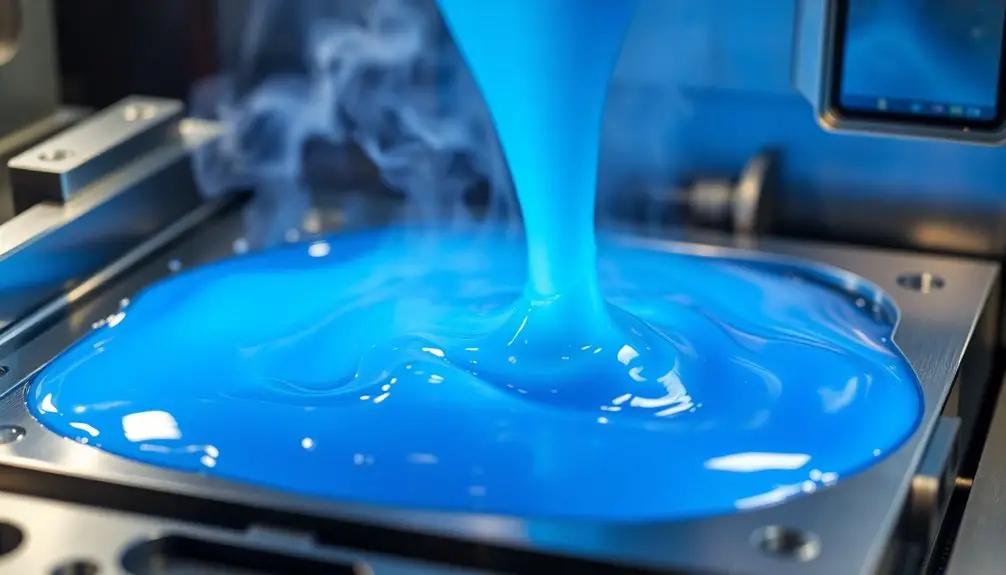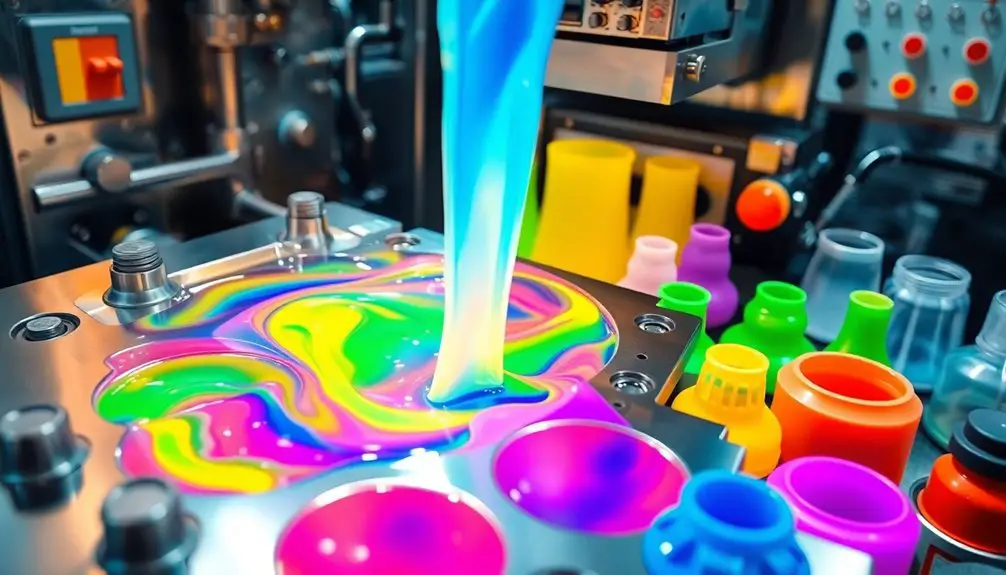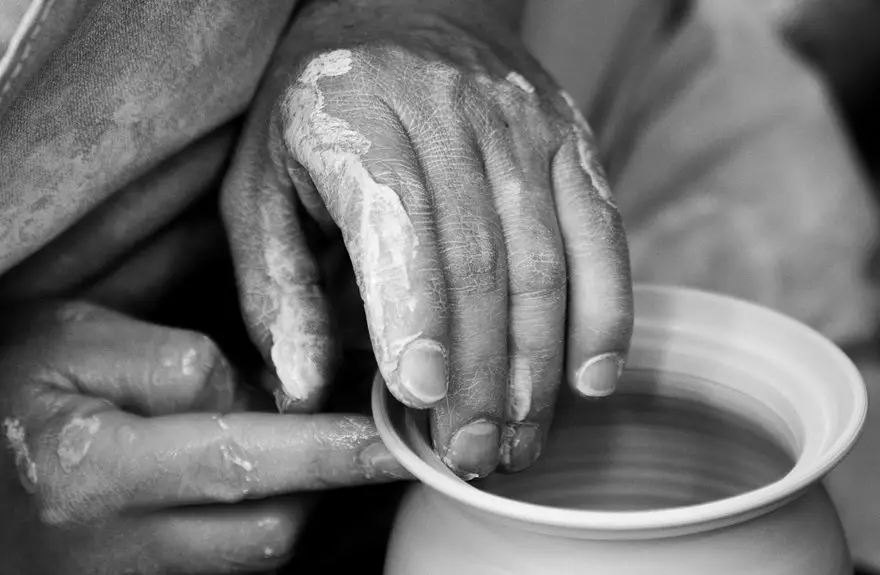Polypropylene is molded primarily through the injection molding process, which is efficient and cost-effective. You start by feeding polypropylene pellets into a hopper and heating them to about 450-500°F until they melt. Then, the molten material is injected into a mold cavity under high pressure. This process allows for intricate designs and quick cycle times, reducing waste. After initial cooling, the molded part is removed easily thanks to specific angles in the mold design. From packaging to automotive applications, polypropylene's versatility shines, and if you're curious about more insights, there's plenty more to uncover.
Key Takeaways
- Polypropylene is melted at temperatures between 450-500°F before being injected into molds to create various parts.
- The injection molding process involves maintaining pressure during cooling to ensure quick solidification and dimensional stability.
- Effective gating and runner systems are essential for consistent quality, with smaller gates recommended to minimize material degradation.
- Properly drying polypropylene pellets at 80-90°C for two hours is crucial to avoid moisture defects during molding.
- Polypropylene's versatility allows it to be used across diverse industries, including food packaging, automotive, and medical applications.
Overview of Polypropylene
What makes polypropylene (PP) such a popular choice in manufacturing? This versatile thermoplastic polymer stands out due to its impressive toughness and flexibility, making it suitable for a wide range of applications.
With a melting point between 160°C to 220°C, it easily adapts to various manufacturing processes, particularly injection molding.
You'll appreciate its low density, which ranges from 0.895 to 0.92 g/cm³, as it contributes to lightweight products without sacrificing performance.
Furthermore, polypropylene exhibits excellent chemical resistance and low moisture absorption, making it an ideal option for food packaging and medical applications.
In addition to its functional properties, polypropylene's cost-effectiveness is a significant factor in its widespread adoption across industries.
It can reduce product costs by up to 20%, allowing you to create affordable yet high-quality items.
Overall, polypropylene's unique combination of characteristics—its toughness, flexibility, low density, and chemical resistance—makes it a standout choice in the manufacturing landscape.
Whether you're working on packaging solutions or durable goods, PP's versatility ensures it meets your needs effectively.
Polypropylene also belongs to the group of FDA-approved plastics, like Polycarbonate Plastics, which are safe for food contact applications, making it suitable for various food storage and packaging uses.
Benefits of Injection Molding
Injection molding offers a range of benefits that make it an attractive choice for manufacturing polypropylene products. One major advantage is the high production rates achievable through the injection molding process. You can produce thousands to millions of identical molded parts at low per-unit manufacturing costs.
The process features short cycle times, often just a few seconds, enhancing manufacturing efficiency and helping to reduce labor costs.
Polypropylene's low melt viscosity allows it to fill intricate mold designs easily, resulting in precise components that are suitable for various consumer products. This precision is crucial when it comes to meeting specific quality standards.
Additionally, using injection molding minimizes material waste, making it a cost-effective and environmentally friendly option for large-scale manufacturing.
Another significant benefit is the excellent dimensional stability exhibited by injection molded polypropylene parts once cooled. This consistency ensures you maintain quality and fit across high-volume production runs, reducing the need for costly rework or adjustments.
Furthermore, the manufacturing efficiency of injection molding contributes to reducing plastic waste, a significant concern in the construction industry where plastics are widely used.
Injection Molding Process Steps

In the injection molding process for polypropylene, dry PP pellets are first fed into a hopper, where they tumble into a heated barrel. Here, the pellets melt at temperatures between 450-500°F, transforming into molten polypropylene.
Once fully melted, the material is injected into a mold cavity through a sprue and runner system under high pressure. This ensures that the molten polypropylene fills every intricate detail of the mold.
After injection, you maintain pressure to hold the plastic in place during the cooling phase, which usually takes only seconds. This quick cooling allows the polypropylene to solidify and take on the mold's shape.
To facilitate easy removal of the finished part, it's essential to design the mold with a draft angle of 1° to 2°.
Before starting the injection molding process, proper drying of the polypropylene pellets at 80-90°C (176-194°F) for two hours is crucial. This step prevents moisture-related defects and ensures optimal flow during molding.
Gating and Runner Systems
Gating and runner systems play a pivotal role in ensuring molten polypropylene flows smoothly into the mold cavity, impacting the quality of your final product.
In injection molding, the gate serves as the last entry point for the molten plastic, and its design can significantly affect part quality. Smaller gates are often recommended to minimize material degradation, leading to better results.
Runner systems act as pathways connecting the sprue to the gates, especially important when you're working with multiple cavities. They ensure even distribution of molten polypropylene, which is crucial for consistent part quality.
To prevent cold plastic from entering the gate, cold slugs are typically incorporated into the runner system, measuring between 4-7 mm for effective protection.
Applications of Polypropylene

Polypropylene finds extensive applications across various industries due to its versatility and beneficial properties.
In the food industry, you're likely to encounter polypropylene in packaging materials like yogurt containers and butter tubs, thanks to its excellent chemical resistance and safety for food products.
When it comes to the automotive industry, polypropylene is a go-to material for producing lightweight parts, such as bumpers and dashboards, which enhance fuel efficiency by reducing vehicle weight. The use of polypropylene in automotive bumpers also contributes to improved fuel efficiency, as it is a highly durable material with excellent chemical resistance.
The medical sector also leverages polypropylene for devices like syringes and surgical instruments. Its resistance to sterilization and chemicals makes it ideal for safe and effective medical applications.
In your home, you probably use durable household items made from polypropylene, including kitchenware and toys. Its strength and flexibility allow for intricate designs, making it a favorite for plastic injection molding.
Finally, the textile industry utilizes polypropylene fibers in products like carpets and upholstery, offering benefits like stain resistance and durability.
Frequently Asked Questions
How Is Polypropylene Molded?
To mold polypropylene, you heat the pellets until they melt, inject them into a mold under high pressure, and then cool them quickly. This efficient process allows for precise, high-volume production of various components.
How Is Polypropylene Produced?
You'll find polypropylene's produced through polymerization of propylene gas, mainly using Ziegler-Natta or metallocene catalysts. These processes create different grades with unique properties, making polypropylene versatile for various applications in industries like packaging and automotive.
How Is Polyethylene Molded?
When you mold polyethylene, you heat pellets until they melt, then inject the molten material into a mold. This process allows for rapid cooling and efficient production, resulting in durable, versatile products like containers and toys.
What Temperature Is Polypropylene Molded At?
When molding polypropylene, you should aim for a barrel temperature around 400°F and keep the mold temperature between 60°F and 120°F. This ensures proper melting, flow, and minimizes defects during the process.

